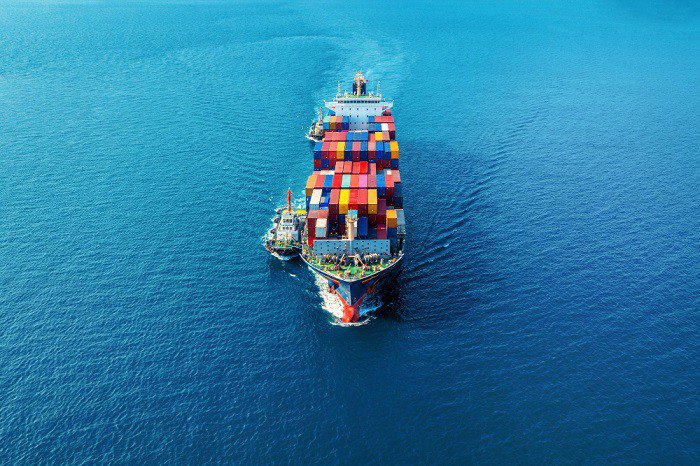
International freight shipping is critical in today's globalized world of trade and commerce. Sea freight shipping is a popular mode of transportation due to its cost-effectiveness, capacity, and dependability.
The ocean is enormous and incomprehensible. And we use it every day to ship freight internationally. Moving goods across the sea is a massive task requiring complex problem-solving abilities. International freight shipping is transporting goods in containers from one country to another by land and sea.
This comprehensive guide will give you eight key factors to consider when shipping goods internationally by sea, including sea freight rates, ocean freight tracking, and sea freight charges.
8 Keys for Freight Shipping Internationally Via Sea
Understanding Sea Freight Shipping
The transportation of goods in containers via ships across international waters is known as sea freight shipping. It is a low-cost option for businesses that need to transport large amounts of goods over long distances. Understanding the fundamentals of sea freight shipping is critical for a successful international shipping experience.
Researching Sea Freight Rates
Researching and comparing different sea freight rates is critical before proceeding with sea freight shipping. Rates may differ depending on shipment size, distance, route, and shipping company. Obtaining multiple quotes will allow you to make an informed decision while also minimizing costs.
Choosing the Right Shipping Company
When it comes to international sea freight shipping, choosing a reputable shipping company is critical. Consider the company's reputation, experience with your particular cargo, network coverage, and customer reviews. Working with a reputable shipping company ensures that your goods are handled efficiently and that the risk of delays or damage is minimized.
Proper Packaging and Documentation
It is critical to ensure proper packaging when shipping goods by sea to protect them during transit. Use sturdy, water-resistant containers and appropriate packaging materials. Furthermore, accurate and complete documentation, such as bills of lading, customs forms, and commercial invoices, is required to meet international regulations and expedite customs clearance.
Understanding Sea Freight Charges
Aside from sea freight rates, there are a variety of charges associated with shipping goods by sea. Terminal handling fees, customs clearance fees, documentation fees, and port charges are examples of these fees. Understanding these fees in advance will allow you to estimate the total cost and avoid surprises.
Managing Ocean Freight Tracking
It is critical to have a robust ocean freight tracking system in place to ensure visibility and transparency throughout the shipping process. Many shipping companies offer online tracking services that allow you to track the progress of your shipment in real-time. This allows you to anticipate any delays and take appropriate action immediately.
Customs Compliance and Documentation
Compliance with customs regulations and accurate documentation is required for international shipping. Learn about the import and export regulations of the countries involved in your shipment. Work with your shipping company and customs brokers to ensure proper compliance, reducing the risk of customs delays or penalties.
Securing Insurance Coverage
While international shipping by sea is generally dependable, unexpected events can occur during transit. Consider obtaining appropriate insurance coverage for your cargo to reduce risks. Freight insurance provides peace of mind and financial security by protecting against loss, damage, or theft.
4 Documents are Required for shipping freight internationally
Depending on where you are shipping to, you may need more documents, but four are required regardless of origin or destination. They are:
- Commercial Invoice: Products are not shipped for free. There is a transaction going on 99% of the time. The commercial invoice specifies the proof of sale and the legally binding contract between the seller and buyer.
- Bill of Lading: This document establishes the carriage contract between the shipper and the carrier. It contains all of the necessary information for processing the shipment, such as the ID number of the container seal.
- Export Packing List: The Export Packing List describes each item in the shipment, such as the total number of packages and the size and volume of each. Transportation companies use this document to cross-check their forms and ensure that what they are shipping is not illegal or hazardous.
- Certificate of Origin: A Certificate of Origin certifies that your imports came from a specific country or an ethical and permitted source.
Conclusion
International freight shipping by sea has numerous advantages, including cost-effectiveness and capacity for large volumes. You can ensure a successful and efficient shipping experience by taking into account the eight key factors outlined in this guide, which include sea freight rates, ocean freight tracking, and sea freight charges.
Remember to conduct thorough research, select a reputable shipping company, adhere to customs regulations, and insure your cargo. You can confidently navigate the complexities of international sea freight shipping with careful planning and attention to detail.





 Get instant quote
and compare offers in real time
Get instant quote
and compare offers in real time